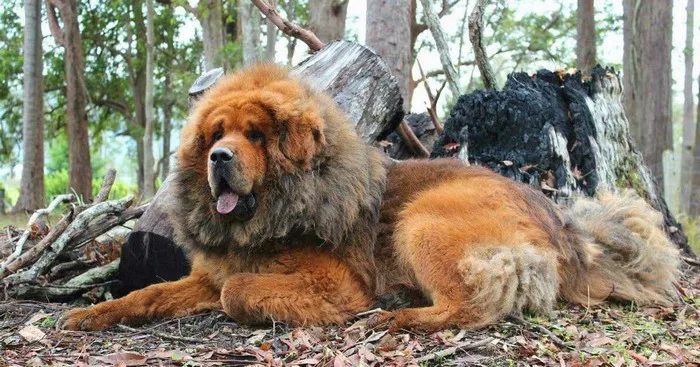How much food does a Tibetan Mastiff eat? It’s a question that often preoccupies the minds of those fortunate enough to share their lives with these majestic creatures. Renowned for their regal appearance and protective nature, Tibetan Mastiffs are not only impressive in size but also in their dietary requirements. In this comprehensive exploration, we delve into the factors influencing the Tibetan Mastiff’s appetite, the nutritional components crucial for their well-being, and guidelines for an optimal feeding regimen.
Understanding the Tibetan Mastiff’s Size and Appetite
Tibetan Mastiffs are a large and powerful breed, originally bred to guard livestock in the Himalayas. Their size alone is a factor that significantly influences their daily food intake. On average, an adult Tibetan Mastiff can weigh anywhere from 90 to 150 pounds or more. This considerable mass requires a well-balanced and nutritionally dense diet to support their overall health and vitality.
Factors Influencing Daily Food Intake
Several factors play a role in determining how much food a Tibetan Mastiff requires. These include age, activity level, metabolism, and overall health. Puppies, for instance, have different nutritional needs than adult dogs due to their rapid growth and development. Likewise, an active Tibetan Mastiff engaged in regular exercise will have different dietary requirements compared to a more sedentary counterpart.
See Also:What Does a Tibetan Mastiff Look Like?
Tibetan Mastiff Feeding Chart
1. Puppy Stage: Birth to 6 Months
During this crucial growth phase, a Tibetan Mastiff puppy should be fed a high-quality puppy food formulated to meet the specific needs of large breeds. The recommended daily intake ranges from 4 to 6 cups, divided into three or four meals.
2. Adolescent Stage: 6 to 12 Months
As the puppy transitions into adolescence, the feeding frequency can be reduced to two or three meals per day. The quantity may increase to 6 to 8 cups daily, adapting to the individual dog‘s growth rate.
3. Adult Stage: 1 to 7 Years
Adult Tibetan Mastiffs generally require 4 to 6 cups of high-quality adult dog food per day, divided into two meals. However, individual variations in metabolism and activity level should be considered.
4. Senior Stage: 7 Years and Older
Senior dogs may experience a decline in metabolism and activity. Adjusting the diet to a senior formula with lower calories and specific nutrients becomes crucial. The daily intake may vary, typically ranging from 3 to 5 cups, depending on the dog’s health.
Nutritional Requirements for Tibetan Mastiffs
1. Protein Content
Protein is a vital component of a Tibetan Mastiff’s diet, supporting muscle development and overall health. Look for dog food with a protein content of at least 25%, sourced from high-quality animal protein like chicken, lamb, or fish.
2. Fat Content
A moderate fat content, around 10-15%, is essential for maintaining the breed’s energy levels. Healthy fats contribute to coat health and assist in the absorption of fat-soluble vitamins.
3. Carbohydrates
While dogs don’t require carbohydrates in large quantities, they play a role in providing energy. Choose dog food with whole grains, vegetables, and fruits as carbohydrate sources.
4. Vitamins and Minerals
Tibetan Mastiffs benefit from a well-rounded diet rich in vitamins and minerals. Calcium and phosphorus, in particular, are crucial for bone health, considering the breed’s large size.
5. Avoiding Overfeeding
Tibetan Mastiffs are prone to obesity, which can lead to various health issues. Careful portion control and monitoring body condition are vital to prevent overfeeding.
How Much Food Does a Tibetan Mastiff Eat in Kg?
Conversion to Metric
For those accustomed to the metric system, understanding the daily food intake in kilograms is essential. On average, an adult Tibetan Mastiff may consume anywhere from 1.8 to 2.7 kg of high-quality dog food per day.
In conclusion, understanding the dietary needs of a Tibetan Mastiff is crucial for ensuring their well-being and longevity. How much food a Tibetan Mastiff eats depends on various factors, and tailoring their diet to their age, activity level, and health status is key. By providing a balanced and nutritionally dense diet, you not only contribute to their physical health but also support the vibrant and loving personalities that make Tibetan Mastiffs cherished companions.
Related Topics:
Is a Tibetan Mastiff a Good Family Dog?
Is a Tibetan Mastiff Stronger Than a Wolf?
What Are Tibetan Mastiff Used For?
























